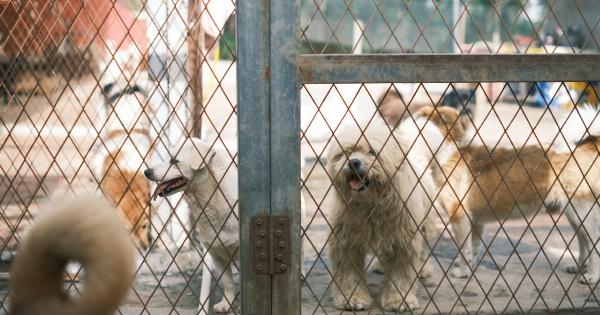Communication is the key to building a strong relationship with your canine companion. Dogs are social animals that rely on various forms of communication to understand and interact with their human counterparts.
As a responsible pet parent, it is imperative to learn how to effectively communicate with your furry friend to ensure a harmonious and fulfilling bond. In this article, we will delve into the art of communicating with your dog and provide you with valuable insights on how to master this skill.
The Basics of Canine Communication
To communicate effectively with dogs, it is crucial to understand their primary modes of communication. Dogs communicate through a combination of body language, vocalizations, and scent cues.
By familiarizing yourself with these fundamental aspects of canine communication, you can better interpret your dog’s needs, emotions, and intentions.
Understanding Body Language
Body language plays a significant role in a dog’s overall communication repertoire. Pay attention to their posture, facial expressions, tail movements, and ear positions to decipher their emotions and behavioral cues.
Establishing Clear Verbal Cues
In addition to body language, dogs also respond well to clear and consistent verbal cues. By using specific words or phrases to indicate commands or behaviors, you can establish better lines of communication with your furry friend.
Always ensure that your tone of voice matches the desired outcome, as dogs are highly attuned to vocal inflections.
The Power of Positive Reinforcement
Positive reinforcement is an invaluable tool for effective communication with your dog. By rewarding desired behaviors with treats, praise, or play, you can reinforce positive associations and encourage your dog to repeat these behaviors.
Positive reinforcement promotes a healthy communication cycle by focusing on positive outcomes rather than punishment.
Building Trust and Establishing Clear Hierarchy
Trust is the foundation of any successful relationship, including the one you share with your dog. Establishing clear boundaries, rules, and a consistent routine helps your dog feel secure and understand their position within the family hierarchy.
A sense of stability fosters better communication and strengthens your bond.
Active Listening and Observation
Communication is a two-way street, and active listening is crucial in understanding your dog’s needs and desires. Pay attention to their vocalizations, body language, and gestures to comprehend their intentions.
Effective communication involves not only expressing your own desires but also respecting and understanding your dog’s signals.
Training and Socialization
Training and socialization play pivotal roles in developing strong communication skills between you and your dog. Basic obedience training teaches your dog to understand and respond to commands, creating a common language between you.
Socializing your dog with other canines and humans also enhances their ability to communicate effectively in various situations.
Effectively Managing Stress and Anxiety
Stress and anxiety can hinder effective communication, so it’s crucial to manage these emotions in your dog. Create a calm and safe environment, provide adequate mental and physical stimulation, and seek professional help if necessary.
By reducing stress levels, you enable clearer communication and a healthier, happier bond with your dog.
Reading the Signs of Discomfort
Dogs may exhibit signs of discomfort or fear when faced with certain stimuli. It is essential to recognize these signs and respond accordingly, ensuring your dog feels safe and understood.
Some common signs of discomfort include panting, lip licking, yawning, and avoidance behaviors. By acknowledging these signs, you can adjust your approach and create a more conducive environment for communication.
Seeking Professional Guidance
If you are struggling to effectively communicate with your dog or encountering specific behavioral challenges, do not hesitate to seek professional guidance.
Trained animal behaviorists or certified dog trainers can provide expert advice tailored to your unique situation, helping you master the art of communication with your furry friend.
Conclusion
Mastering the skill of communicating with your dog is a journey that requires patience, understanding, and consistent effort.
By familiarizing yourself with their body language, establishing clear verbal cues, and using positive reinforcement, you can build a strong and fulfilling bond with your canine companion. Remember, effective communication is a mutual exchange, so make sure to actively listen and observe your dog’s signals.
With time, practice, and a genuine desire to connect, you can become a skilled communicator and forge an unbreakable bond with your beloved pet.

























